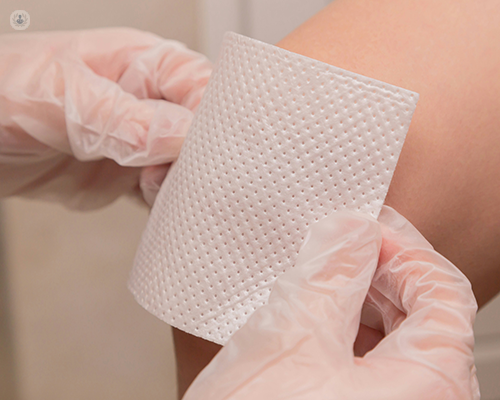Keloid prevention strategies: Tips to minimise the risk of scarring
Escrito por:Keloids are scars that can arise from various types of skin trauma that can not only pose aesthetic concerns but can also lead to discomfort, itching, and emotional distress for those affected.
This article provides an expert insight into keloids, offering practical tips to minimise the risk of developing them.

What is a keloid?
A keloid is a raised scar that occurs when the body produces an excess of collagen during the healing process. Unlike regular scars that remain confined to the original injury site, keloids extend beyond the boundaries of the wound, resulting in a thick, fibrous tissue formation.
Keloids can appear red, purple, or dark brown, depending on the person's skin tone. They can vary in size and may also feel itchy or tender, making them a source of discomfort for many people.
What causes keloids to form?
Keloids develop in response to skin trauma, including cuts, surgeries, and even acne. Several factors also play a role in their formation:
- Skin injuries: Keloids often arise from various types of skin injuries, including surgical incisions, acne lesions, cuts and abrasions, piercings and tattoos, and burns.
- Family history: People with a family history of keloids are at a higher risk of developing them. Genetic predisposition can also influence how a person’s skin heals and responds to injury.
- Skin tone: People with darker skin tones, such as those of African, Hispanic, or Asian descent, are more prone to keloid formation. This susceptibility is associated with heightened melanin production and altered collagen response in the skin.
Keloids are more likely to develop in people aged 10 to 30, as this is when the body’s tissue repair activity is at its peak.
How can I prevent keloids after surgery or injury?
Preventing keloids involves taking proactive measures during the healing process. Some effective strategies that can minimise the risk of formation involve:
Keeping the wound clean and covered
Excessive tension or movement around the wound site can trigger keloid formation. Thus, it’s important to be mindful of activities that could stress the healing skin, such as vigorous exercise or wearing tight clothing.
In addition, clean the wound with mild soap and water, and apply an antiseptic to reduce the risk of infection. Use a sterile bandage or dressing to protect the area from external irritants and bacteria.
Using silicone gel sheets or ointments
Silicone gel sheets and silicone ointments create a protective barrier that helps maintain moisture and regulate collagen production at the wound site. Begin using silicone gel sheets or ointments once the wound is fully closed and no scabs are present.
Consulting with a specialist
Before and after surgery, consult with a specialist (such as a dermatologist or a plastic surgeon) for personalised advice on wound care and keloid prevention strategies. These specialists can recommend specific products or treatments based on each person’s individual risk factors.
Can keloids be treated if they have already formed?
Yes, keloids can be treated even after they have developed, although treatment success may vary. Common treatment options for keloids include:
Corticosteroid injections
Corticosteroid injections can help reduce the size and appearance of keloids by decreasing inflammation and collagen production.
Surgical excision
Surgical excision of the keloid is an option for larger or more bothersome keloids. However, this is not a permanent solution, as keloids have a tendency to recur post-excision.
Laser therapy
Laser treatments can flatten and lighten the colour of keloids by targeting the blood vessels within the keloid tissue, leading to a reduction in size and improved appearance.
When is the best time to start keloid prevention treatments?
The best time to start is as soon as the wound has closed or healed sufficiently.
After a wound has healed, monitor the area for any signs of keloid formation, such as redness, itchiness, or unusual growth. Early intervention is key to preventing keloids from becoming larger and more problematic.


